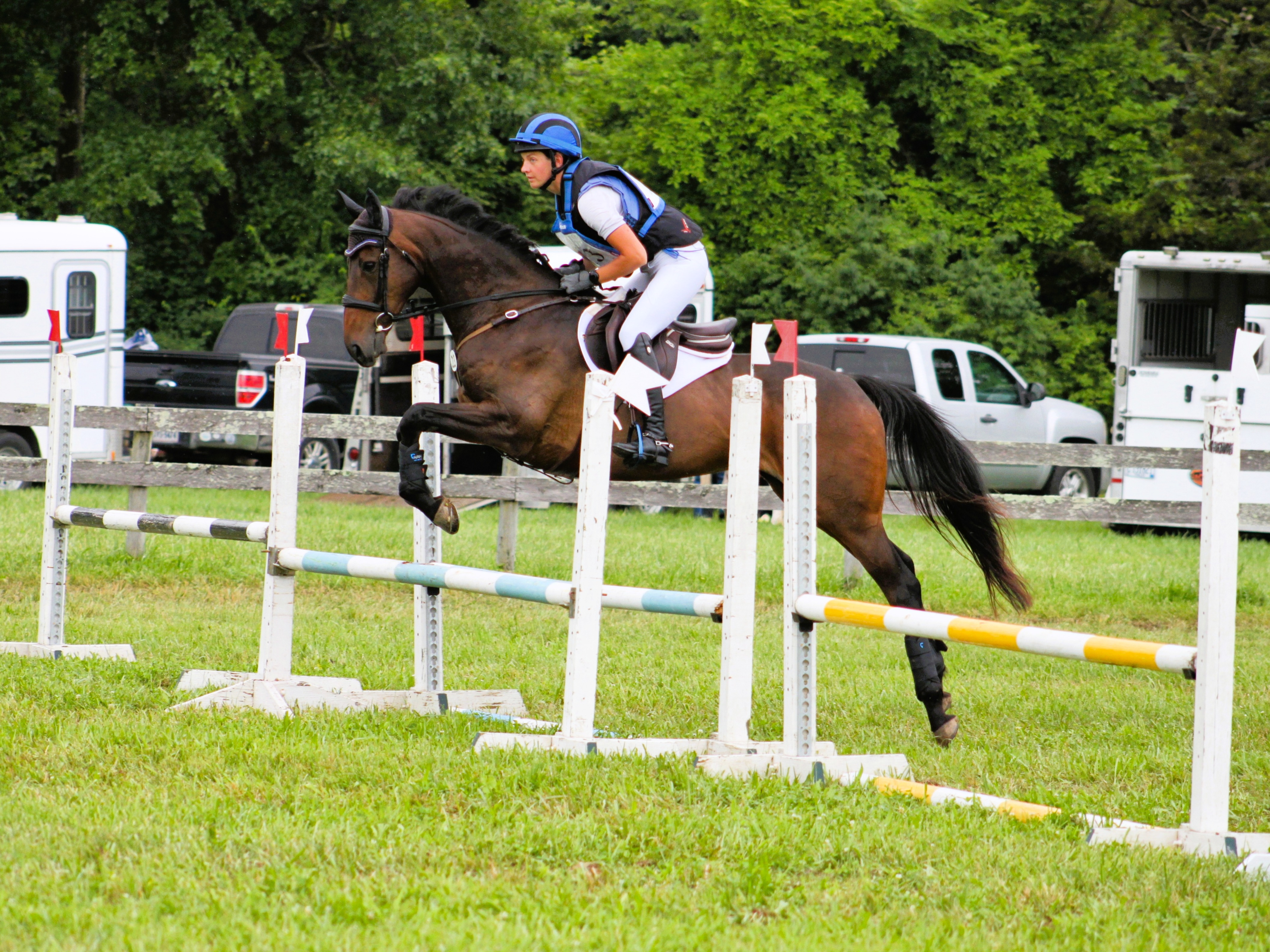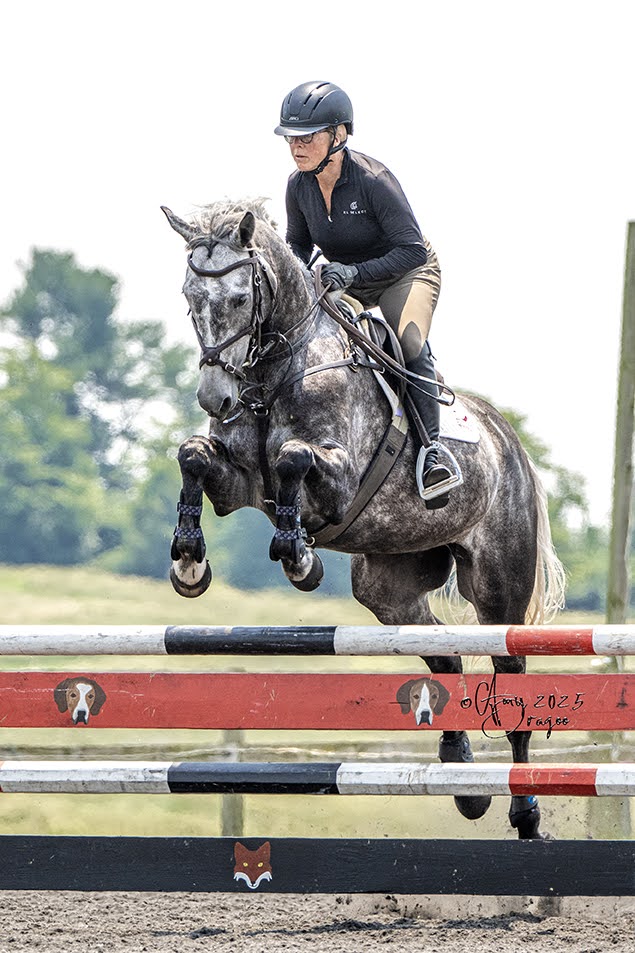Lisa Marie Fergusson returns today with her latest EN blog. This is Lisa’s first post since her successful adventures at Galway. Welcome back Lisa! Thank you for writing this and thank you for reading.
—-

From Lisa:
WELL I DO DECLARE!
Scarlet O’Hara certainly knew how to get her way, for me I am just trying to find my way…to the Olympics that is! December 1st was the initial deadline for declaring your intent to try out for the Canadian Olympic Team and Canada “I do declare.” At this point it really is more a formality than anything, essentially you are stating that you have met all the qualifications and you would be participating in the winter Olympic training sessions held in Ocala, oh and that you will pay the $400 declaration fee, nothing is free in this world and yes we are officially declared.
THE ROAD LESS TRAVELED
The road to the Olympics for Smartie is by no means of the “yellow brick” nature. In fact, at this point, it is not a highway or even a city road, truth is it is more like a toll road that is not even paved at this point. So, yes we will pay the $400 toll to get on the road and we will work hard over the winter to see if we can fill some of the pot holes, grade our path and hopefully pave our way to London. We definitely have our work cut out for us. Canada had a fantastic showing at WEG’s and David O’Connor’s program has developed some legitimate world class horse and rider combinations.
MONEYBALL
For those who have watched the movie Moneyball, the story line is not far off the Canada/USA eventing parallel. David and his team have had to take the players (horse and riders) they have and develop a highly competitive team on a shoe string budget, while the New York Yankee’s (USA) have the budget to better fund riders and have some owners that are willing to buy and potentially field some very talented and very expensive horses. I’m sure Canada’s success at WEG’s opened a few eyes and gave huge credibility to David’s work with the Canadian Team so it will be interesting to see how Moneyball II plays out come London. I can only hope that Smartie and I can do enough to earn a spot on the team but at this point it all starts with winter training sessions and then an exciting spring season.
MAKING A LEARNING CURVE A CIRCLE
I don’t imagine that many of you would remember my last Advanced horse Uni Griffon who was long listed for the Canadian Olympic team in 2007. The future for us looked pretty bright. I was young, Uni was young (9), we were consistently competitive and won at every level, including a win at our first CIC 3*. In my mind we were unstoppable. In the spring of 2007, I trained in Virginia with David O’Connor with the goal of earning a spot on the 2008 Olympic team and as life will challenge us, Uni and I had a few setbacks.
In retrospect, having had success early and basically no adversity along the way made the problems feel like I hit a wall doing 100, we didn’t see it coming but as the saying goes, “When the going gets tough, stop listening to your coaches, try fixing it yourself and let your ego get in the way.” OK that’s not the saying, rather it’s what I did. It was perhaps the biggest learning curve of my career and shaped me as a rider, trainer and person like no other time in my life.
The hard lesson of opportunity lost taught me a lot. Simply put, learning begins with asking questions, being honest with where you are at and not being afraid to ask for help. It is then and only then that people can truly help. Equally important, if you do not reach out for help and you continue to make the same mistakes over and over, then you essentially turn the learning curve into a circle and you end up right back where you started. If you are interested in your quickest path to reaching your goals, take my advice, ask for help, listen to your coaches and stay on the curve! Uni and I did not go to Beijing; instead we went back to the drawing board.
The end of 2008 was highlighted by two great things, Uni was back on track and won the CCI 2* at Florida Horse Park and a client of mine bought Smartie. In 2009 Uni came out better than ever but his first real test would be running the Advanced at Maui Jim. At Maui, Uni was tied for the lead after the dressage and was one of two horses to go double clear cross country but that is really where the story begins.
WHEN ONE DOOR CLOSES ANOTHER OPENS
Alexander Graham Bell said “When one door closes another opens “. Two minutes after we completed cross country Uni collapsed and died, he was 11. The USEF did a full necropsy and found nothing wrong with him, he was in perfect health and they really had no answers for me. I was crushed. The door was not just closed but slammed. I’d had Uni since he was 5 months old, he was a huge part of me, my identity and it seemed any dream of WEG or future Olympics was gone, forever.
The second part of Alexander Graham Bells quote, “But we often look so long and so regretfully upon the closed door that we do not see the one which has opened for us.”
Jay Taylor was the client who bought Smartie and he made that door opening pretty hard to ignore, the door was more like an airplane hanger door, it was that obvious. Upon hearing about Uni, Jay offered Smartie to me at a ridiculously low price. At the time Smartie was just 5, he was incredibly athletic, super brave and very bright (hence the Smartie) but he was competing at training level and with only 3 years till London, realistically he was not a horse you would believe was a prospect for the London Olympics. Jay was absolutely convinced we could do it and with his enthusiasm and with the support and encouragement from those close to me, the journey to the Olympics began to take shape and ironically, as it turns out, that door for me is Smartie.
Smartie by no means has made the team but we have been told that we have a chance and that in itself is everything. Now, nearly 5 years after beginning the Olympic quest with Uni I have a lot more experience, a little more maturity, great coaches, an open mind, a great horse and I’m hoping that we can finish what Uni (Smartie’s ½ brother) and I started.
For young riders there are a few morals to this story. As much as you think you know there is always more to learn, as good as you are, strive to be better, If your quest is to be the best, keep an open mind, listen to your coaches and if you think you have the answers check yourself, trust me you can always learn more and finally don’t ever stop moving forward and stay positive, because sometimes your biggest disappointments have been disguised as your greatest opportunities. Continue to work hard and believe, be thankful for the people who trust, support and believe in you and remember all things are possible, Smartie and hard work has taught me that.
FUTURES SO BRIGHT I HAVE TO WEAR SHADES
Actually it’s not so much the future as it is that we are now in Wellington, Florida for the winter and it is sunny and yes I have to wear shades. Smartie has officially started working on his ABBC’s, that’s Auntie Betsy’s Boot Camp. Turning up Betsy’s driveway for his first lesson you could feel Smartie’s excitement, Smartie really loves his Aunt Betsy and it feels great to have that first lesson under his girth.
Smartie has officially notified Santa that “all he wants for Christmas is a fancy trot”, ok it’s actually what I want for him, that combined with creating a better connection and getting him working more uphill will be our dressage goals this winter and on the Show Jumping front we will work to improve our form and technical accuracy at the advanced level.
“THE TOUGH GET GOING”
London is the ultimate goal for 2012 but actually being selected to the team is not something I have any control over. What I do have control of is staying 100% focused and committed to producing the best horse possible and if that leads us to London then I will be a very happy girl and if by chance, along the way, we are met with any difficult challenges I am confident that this time “the tough will get going”….. with a little help from our friends of course. In the mean time, Happy Holidays to everyone and we will touch base soon to let you know how things are progressing, until then….GO EVENTING!




































